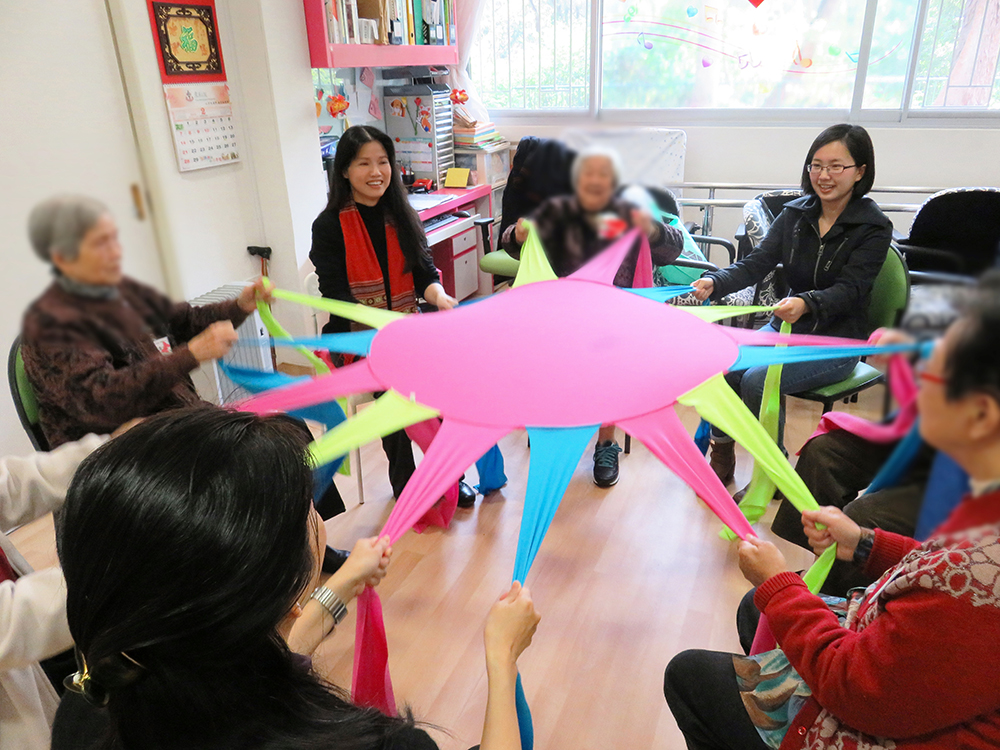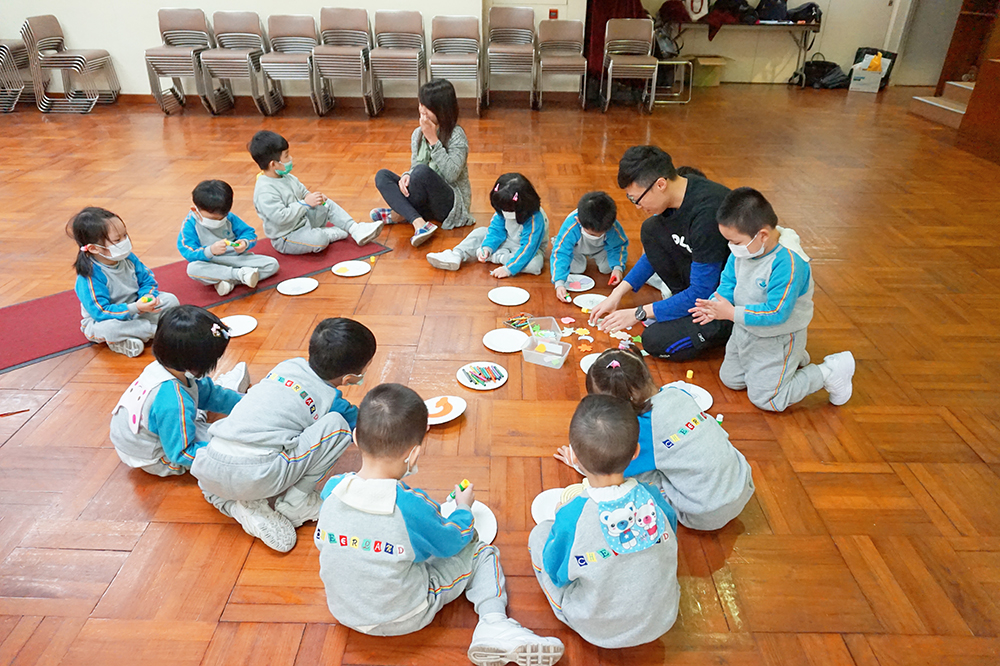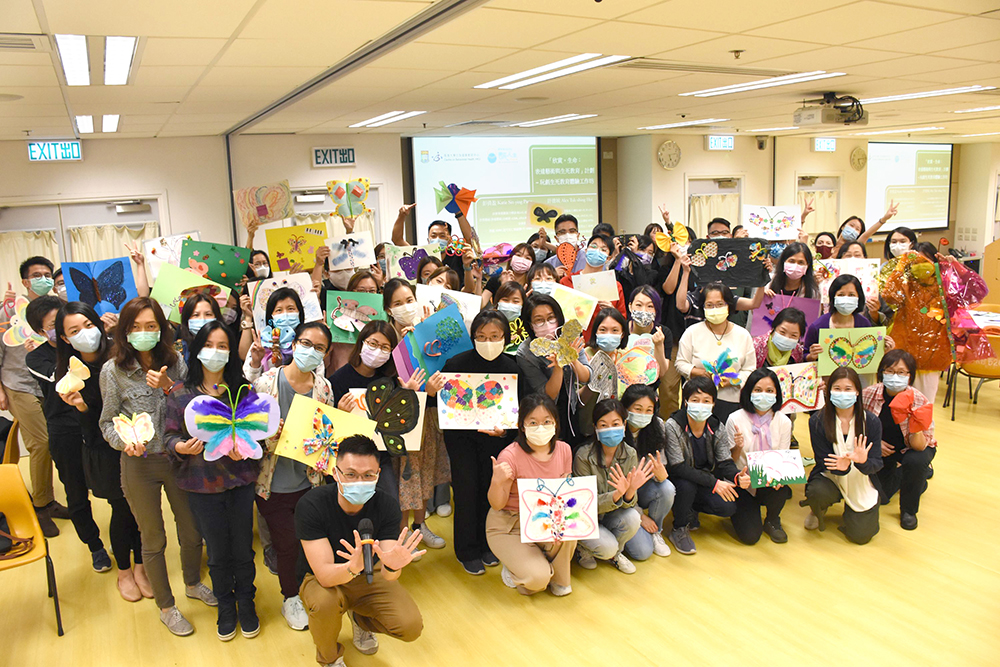November 2021 | Volume 23 No. 1
Healing through the Arts
Pummelling, squeezing and moulding clay into shape, splashing paint across a canvas or moving freely to music should instinctively feel satisfying. Professor Rainbow Ho Tin-hung of the Department of Social Work and Social Administration has put that insight through a research lens to produce scholarly evidence of the benefits.
In a 2017 randomised controlled trial (RCT) with her then-PhD student Dr Joshua Nan Kin-man, for example, she found clay art intervention could reduce symptoms and improve well-being among 106 adult outpatients suffering from major depressive disorders. The success of that study inspired her to dig deeper into other expressive art therapies and different groups, ranging from children to the elderly who have conditions such as intellectual disabilities, dementia and HIV.
“Artistic expression plays an important role in how we make sense of the world and understand and communicate with others,” she said. “In 2019 the World Health Organization published its first report on how art can impact health and well-being, which is an important backbone to our work. It documented how art can help in health prevention and promotion, management of conditions, and treatment.”
Working with colleagues from the Centre on Behavioral Health, Professor Ho studies arts therapy in a Hong Kong context. Following the clay study, she conducted an RCT on dance movement therapy for older adults with mild dementia. The 204 participants were assigned to dance therapy, exercise or no intervention. While the first two groups performed best, the dance group had a significant reduction in their depressive mood and sense of loneliness. “They also had better cognitive improvement. These effects were unique to the dance therapy group,” she said – so it was not movement alone that was helping them.

Dance and movement can be engaged as effective non-verbal interventions. The elderly express, communicate and engage in healing through their bodies in the dance movement therapy group.
Distancing difficult emotions
Another RCT used music to manage behavioural and psychological symptoms in 73 elderly Chinese with moderate dementia. The results again were encouraging, with participants showing reductions in agitation, general unhappiness and frustration (dysphoria).
Professor Ho and her team also found expressive arts therapy helped people living with HIV find meaning in life and improve their quality of life and mood, and helped foster behavioural and emotional well-being among adults with intellectual disabilities.
Children benefit from expressive arts therapy, too. A study of 213 primary school children with special educational needs found the therapy reduced their emotional difficulties, hyperactivity and peer problems, as perceived by their parents and teachers. Another study of parent-child dyads found a positive effect of play-oriented arts on parents’ moods and children’s social behaviours.
“The channel of arts is not purely based on verbal ability or cognitive functioning, so it can facilitate communication and expression,” she said.
Professor Ho has also been exploring the question of how art effects change, as part of a team of international creative arts therapy researchers. Their findings were published this summer.
“There are some common effects across the art forms, such as the therapeutic relationship alliance that occurs between the therapist and the client and the use of symbolism to help people distance themselves from difficult emotions and look at things from different angles,” she said. Her own contribution to the paper focussed on dance and suggested moving together in a group could enhance togetherness and reduce the sense of loneliness.

Professor Rainbow Ho’s research showed that children also benefit from expressive arts therapy.
Benefits to social well-being
Professor Ho has herself experienced the benefits of expressive arts. She began dancing as a child and still participates as a judge in international DanceSport (ballroom dancing competitions). Dancing also led her to focus on anatomy for a Master’s in biomedical sciences (she also has a PhD in social work).
“I have experienced how art can help me. When I’m tired or not in a good mood, I dance and feel much better. Dancing also helps me focus and be more flexible in both my body and mind. And I see people around me benefitting from the arts as well,” she said.
That intuitive understanding has motivated her to promote expressive arts therapy beyond academia and in the community. She led the launch of a Master of Expressive Arts Therapy programme at HKU in 2013, the first of its kind in the region, which admits about 25 students each year.
She has also developed outreach and train-the-trainer programmes benefitting thousands of recipients and involving multiple collaborators in the community, such as the Hong Kong Jockey Club, Sovereign Art Foundation, Robert H N Ho Family Foundation and Keswick Foundation, and led a project using expressive arts for substance abuse rehabilitation that was supported by the Beat Drugs Fund. She has also promoted arts and well-being in speeches delivered around the world. Her work earned her the 2021 Faculty Knowledge Exchange Award.
Given all the benefits, Professor Ho would like Hong Kong to recognise the expressive arts therapy profession and follow other jurisdictions, particularly in Europe, where arts activities are prescribed as a form of medicine or treatment. “Many of us are experiencing distress, in particular after the social unrest and the social restrictions under the pandemic. People are looking for something that can draw them together. The arts are very good at rebuilding collaboration and benefitting social well-being,” she said.

Many participants benefitted from the train-the-trainer programmes organised by the Centre on Behavioral Health.
The channel of arts is not purely based on verbal ability or cognitive functioning, so it can facilitate communication and expression.

PROFESSOR RAINBOW HO TIN-HUNG

